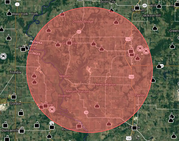|
The USEPA published a final rule, entitled, “Management Standards for Hazardous Waste Pharmaceuticals and Amendment to the P075 Listing for Nicotine” in the Federal Register on February 22, 2019. According to the USEPA announcement, the final rule establishes cost-saving, streamlined standards for handling hazardous waste pharmaceuticals to better fit the operations of the healthcare sector while maintaining protection of human health and the environment.
This final rule will help protect drinking and surface water reducing the amount of hazardous waste pharmaceuticals entering waterways by 1,644 to 2,300 tons on an annual basis. To accomplish this the rule will prohibit disposal of pharmaceuticals in the sanitary sewer by all facilities subject to the rule. This action will help address the issue highlighted by a growing body of publicly available studies documenting the presence of pharmaceuticals in drinking and surface waters as well as their negative impacts to aquatic and riparian ecosystems. In addition, FDA-approved, over-the-counter nicotine replacement therapies (i.e., nicotine patches, gums and lozenges) will no longer be considered hazardous waste when discarded. This will result in significant cost savings and burden reduction in the management of these types of nicotine wastes. Finally, the final rule reaffirms EPA’s long-standing policy that non-prescription pharmaceuticals and other unsold retail items that have a reasonable expectation of being legitimately used/reused or reclaimed are not solid waste. It also provides regulatory certainty that the Resource Conservation and Recovery Act (RCRA) applies when healthcare facilities send unused, unsaleable prescription hazardous waste pharmaceuticals to reverse distributors to receive manufacturer credit. Simultaneously, the rule incorporates flexibilities to accommodate current reverse distribution business practices to facilitate its implementation. SRM will keep you posted on this important development.  Did you think that once you “complete” your Risk Management Planning (RMP) and Process Safety Management (PSM) programs there is no more work to be done? Often, regulatory requirements are thought of as one and done. You prepare the document and its done, you don’t have to look at it again for five years. Not in this case. These programs require vigilance, especially if the processes at your facility often change. For starters, both PSM and RMP include periodic actions that must be completed regularly. Here’s an abbreviated listing:
So, as you can see with this truncated list of periodic requirements, there is a lot to do after the main part of the program is established. I will say this, it gets a little easier as personnel understand what is expected of them and adopt a PSM/RMP safety culture. One final thought. Remember to document all of your reviews and date all of your changes. The old saying still holds true. If it wasn’t documented and you can’t prove a review took place, it didn’t happen.  Once again SRM is attending and hosting a booth at the semi-annual Michigan Environmental Compliance Conference (MECC) located at the Lansing Center on June 12 and 13, 2018. There will be over 70 educational sessions, 38 exhibitors, and 18 DEQ program exhibitors. Click here for more information. Come visit SRM at Booth 35. We hope to see you there!!  Beginning July 1, 2018, all hazardous waste shipments from small and large quantity hazardous waste generators, and all shipments of polychlorinated biphenyl (PCB) waste, requiring a uniform manifest, must be submitted to the U.S. EPA for tracking in the online e-Manifest system. The receiving TSDF is responsible for submitting the e-Manifest information it receives to the U.S. EPA. It is also responsible for paying any e-Manifest processing fees due to the U.S. EPA following deployment. To ensure a smooth transition, generators are encouraged to review e-Manifest resources shared with them by their TSDF and to review resources on the MDEQ and USEPA websites. Highlights for Generators
The eManifest online system is located in the USEPA CDX online system under RCRA Info and is currently available to explore. You will need to open a CDX account if you don’t already have one. There is a Youtube video from USEPA that walks you through a fictitious site and may be helpful. To get more information, check out the MDEQ and USEPA resource pages, or contact SRM for assistance. USEPA issued the TSCA Inventory Reset final rule On June 22, 2017 in pre-publication form. The rule requires every chemical manufacturer and importer to notify USEPA of each chemical substance it manufactured or imported (for a non-exempt commercial purpose) in the US during the 10-year period ending June 21, 2016. This 10-year period is referred to as the “Lookback Period.”
Each chemical substance for which USEPA receives a notification will be designated as “active” on the TSCA Inventory. Manufacturers and importers must provide this notification to USEPA within 180 days from the date on which the rule is formally published in the Federal Register. However, USEPA has not yet published the final rule in the federal register. If the rule is finalized as proposed it will require the following:
For more information go to the USEPA TSCA inventory information page. |
|


 RSS Feed
RSS Feed
